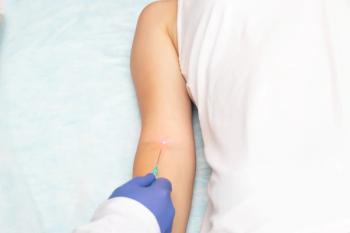
Breast Cancer Therapeutics Market Projected to Grow $4 Billion by 2020
Launch of premium-priced agents powering growth forecast.
Launch of premium-priced agents powering growth forecast.
A gradual increase in the use of targeted therapies combined with the launch of several high priced new agents are expected to cause the breast cancer therapeutics market to grow by $4 billion through 2020, according to a new report by business intelligence firm GBI Research.
The report projects the market to grow from $9.2 billion to $13.1 billion by the end of the decade, at a Compound Annual Growth Rate (CAGR) of 5.1%. Also powering the growth is increased use of branded products and a rising incidence population, according to GBI.
“The total value of the breast cancer treatment market will increase by almost $4 billion over the forecast period thanks to branded drugs becoming more favored,” said GBI analyst Saurabh Sharma in a press release. “This is despite the launch of trastuzumab biosimilars that are likely to compete actively with branded Herceptin.”
The United States had the largest breast cancer therapeutic market last year at $5.5 billion, which is equivalent to a global share of 59%. Japan had the second largest market at $871.5 million with a 9.4% global share, while Italy was third with $668.5 million and a 7.2% global share.
Despite Canada having the lowest market of the top 8 countries at $268.4 million with a 2.9% global share, it is projected to see rapid growth through 2020 with a CAGR of 6.7%. Only Japan is expected to see a higher growth rate over the period with a CAGR of 6.9%.
The report identified the key targeted therapies as Roche’s Perjeta and trastuzumab-DM1, Eisai’s Halaven, Novartis’ Afinitor, Pfizer’s palbociclib and neratinib, and Boehringer Ingelheim’s afatinib. The standard of care in the breast cancer market is projected to be advanced by Roche’s Kadcyla, a biobetter of Herceptin for the treatment of metastatic breast cancer, which was approved in 2013.
A recent study, published in the January 2014 edition of Core Evidence,
The
GBI Research finds the breast cancer pipeline, with potential candidates in various phases of clinical development, to be highly robust. Oncology agents currently comprise one-third of the overall drug pipeline.
Of 612 progressing pipeline molecules, 259 (42%) are currently in the preclinical stage of development, 100 (16%) are in Phase I of clinical trials, 130 (21%) are in Phase II and 52 (8%) are in Phase III, according to the GBI press release.
“As well as the multitude of therapies in preclinical and clinical trial stages, a substantial number of active drug candidates are in the discovery stage,” Sharma said in the release. “Most of the pipeline drugs are novel, and a few are either generic or branded products that have already been marketed for other indications. The current investigational pipeline agents also include new combination and targeted therapies, promising immunotherapies and chemotherapy drug candidates.”
Newsletter
Stay informed on drug updates, treatment guidelines, and pharmacy practice trends—subscribe to Pharmacy Times for weekly clinical insights.













































































































































































































